Measure to Measure - Page 3
Gathering DataIn order to optimize surface area and volume we need to gather data on how the size of the cut we make affects the surface area and volume of our box. If we were manufacture boxes, we might want to use the least amount of material to build the box, but make it so that the box has the greatest possible capacity.
The first example box had 3x3 squares cut out of the corners of the piece of paper. We called that a '3 cut, or a 'cut of 3'. Next we will cut out 4x4 squares from the corners of a another sheet of paper. We'll call that a cut of 4 and so on. Let's keep doing this for cuts 1, 2, 3, 4, 5, 6, 7, 8, and 9. (If doing this as part of a group, the other participants may have already created boxes of the other cuts).
Cuts 1-9
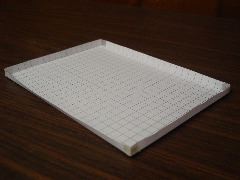 cut of 1 |
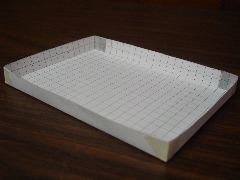 cut of 2 |
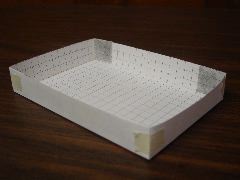 cut of 3 |
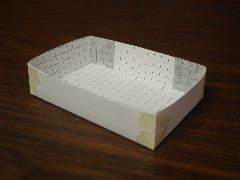 cut of 4 |
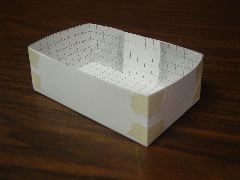 cut of 5 |
 cut of 6 |
 cut of 7 |
 cut of 8 |
 cut of 9 |
With our 19x25 paper, could we make a box of cut 10? Why not?
For each of the boxes, measure the surface area by counting the number of squares on the surface of the box. Find the volume by using the Volume Applet. Also, determine how much sand the boxes can hold by pouring in sand, leveling off the top, and measuring the mass.
Put the data in a chart like this:
| cut (units) |
surface area (square units) |
mass (kg) |
volume (units cubed) |
| Sample Data! |
| On to Page 4! |